Full text
PDF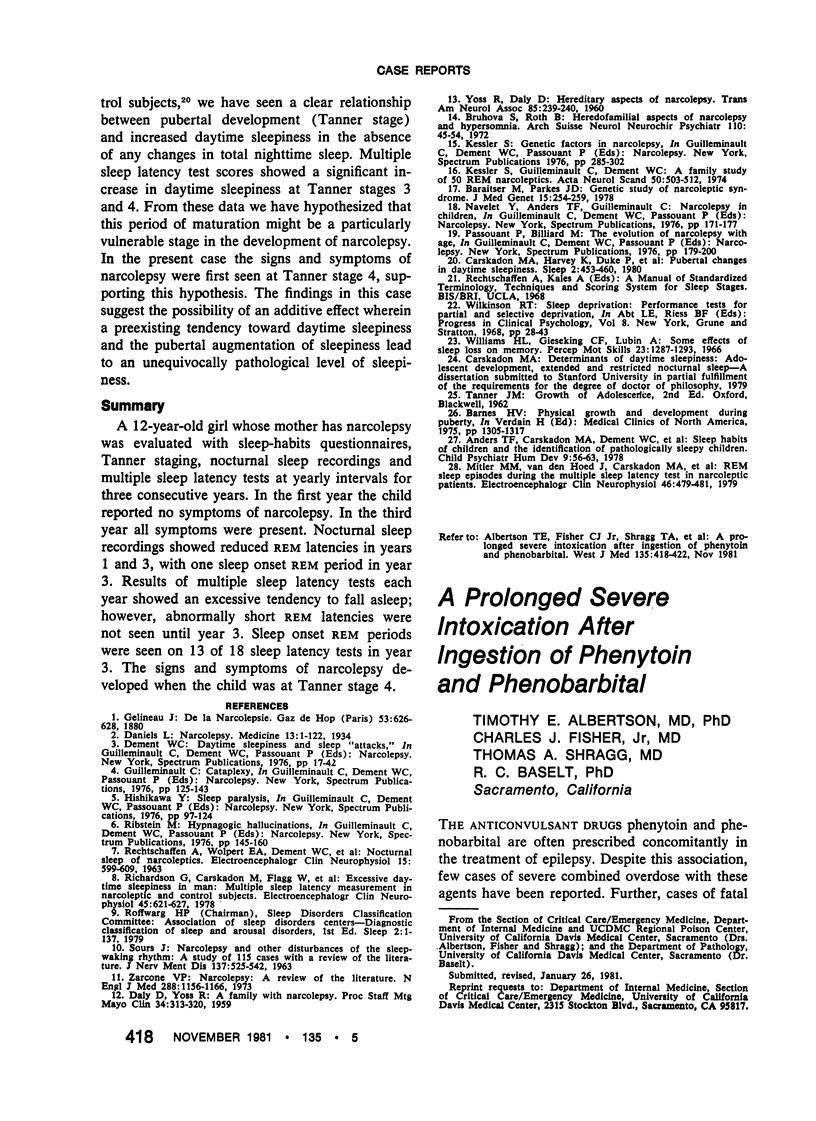
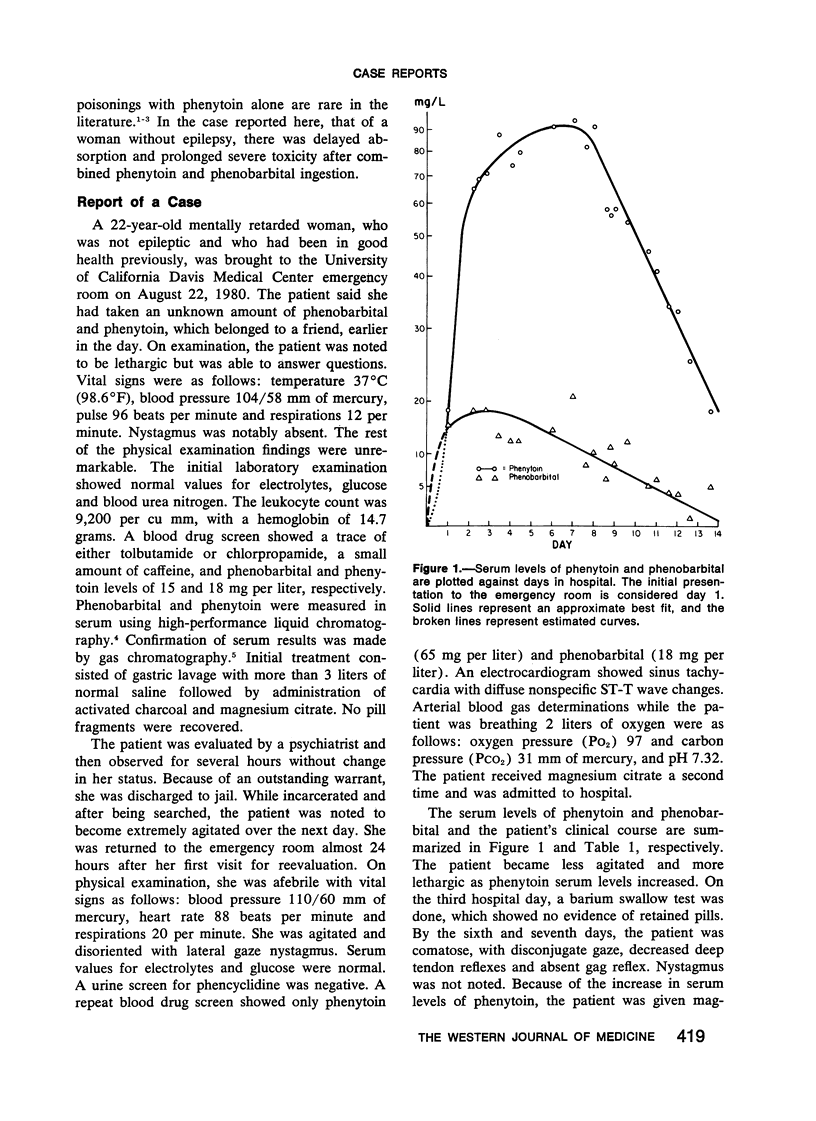
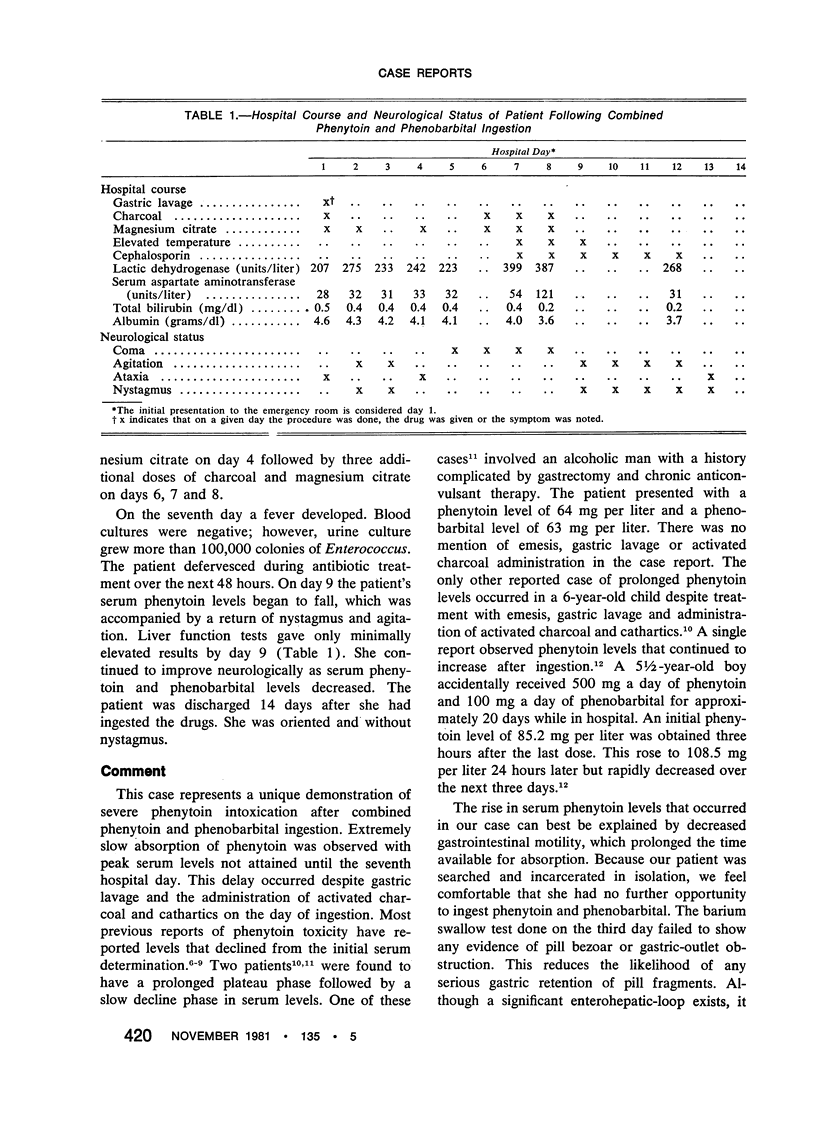
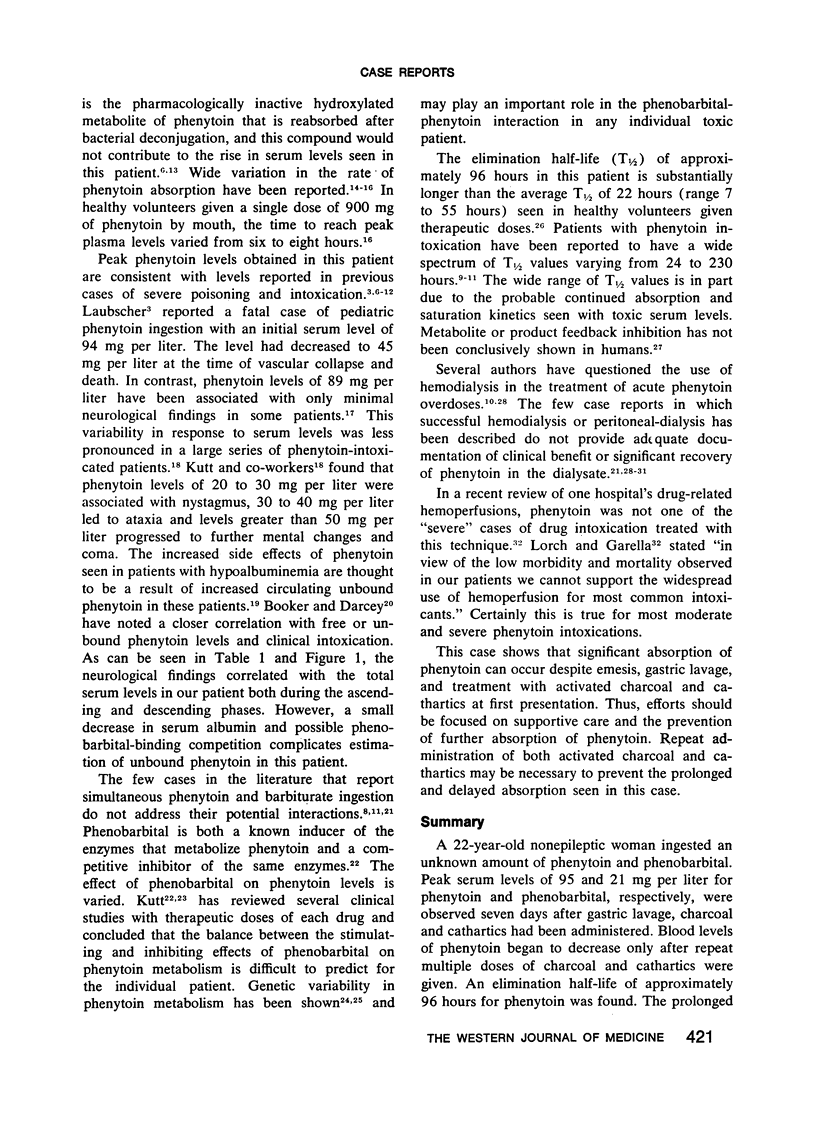
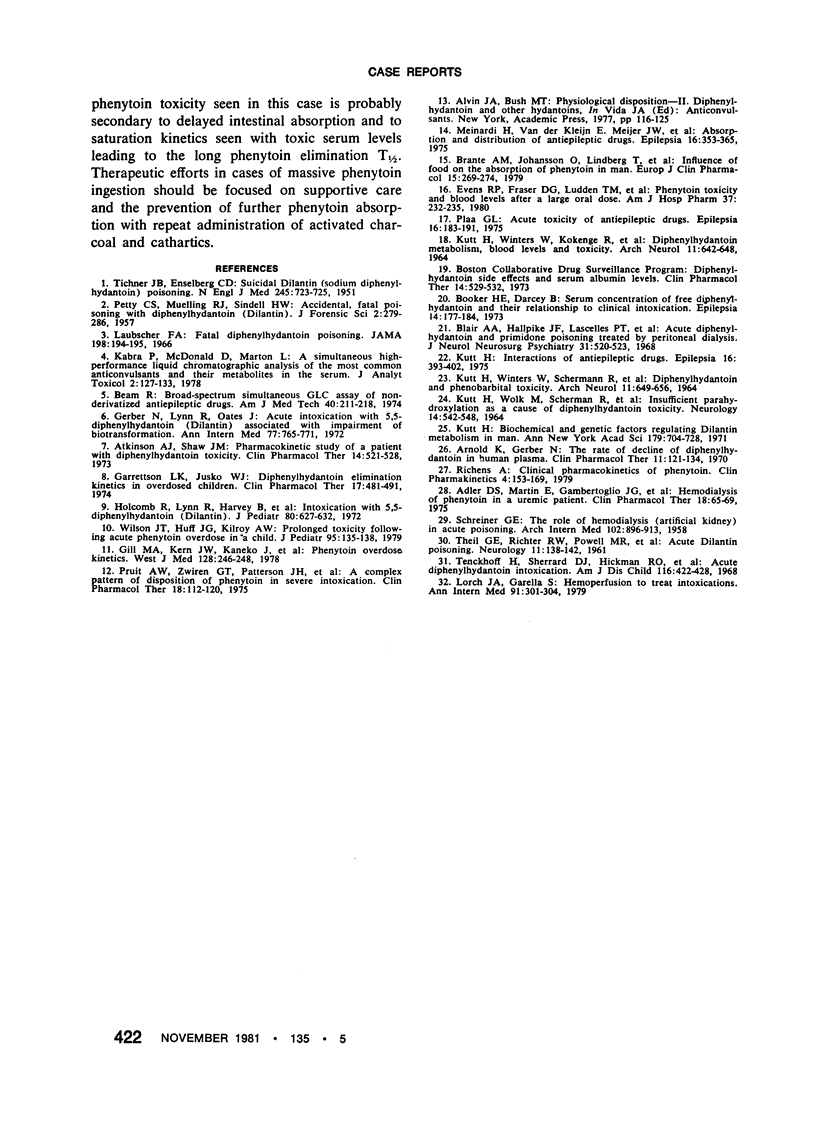
Selected References
These references are in PubMed. This may not be the complete list of references from this article.
- Adler D. S., Martin E., Gambertoglio J. G., Tozer T. N., Spire J. P. Hemodialysis of phenytoin in a uremic patient. Clin Pharmacol Ther. 1975 Jul;18(1):65–69. doi: 10.1002/cpt197518165. [DOI] [PubMed] [Google Scholar]
- Arnold K., Gerber N. The rate of decline of diphenylhydantoin in human plasma. Clin Pharmacol Ther. 1970 Jan-Feb;11(1):121–134. doi: 10.1002/cpt1970111121. [DOI] [PubMed] [Google Scholar]
- Atkinson A. J., Jr, Shaw J. M. Pharmacokinetic study of a patient with diphenylhydantoin toxicity. Clin Pharmacol Ther. 1973 Jul-Aug;14(4):521–528. doi: 10.1002/cpt1973144part1521. [DOI] [PubMed] [Google Scholar]
- Beam R. E. Broad-spectrum simultaneous GLC assay of nonderivatized antiepileptic drugs. Am J Med Technol. 1974 May;40(5):211–218. [PubMed] [Google Scholar]
- Blair A. A., Hallpike J. F., Lascelles P. T., Wingate D. L. Acute diphenylhydantoin and primidone poisoning treated by peritoneal dialysis. J Neurol Neurosurg Psychiatry. 1968 Oct;31(5):520–523. doi: 10.1136/jnnp.31.5.520. [DOI] [PMC free article] [PubMed] [Google Scholar]
- Booker H. E., Darcey B. Serum concentrations of free diphenylhydantoin and their relationship to clinical intoxication. Epilepsia. 1973 Jun;14(2):177–184. doi: 10.1111/j.1528-1157.1973.tb03954.x. [DOI] [PubMed] [Google Scholar]
- Evens R. P., Fraser D. G., Ludden T. M., Sutherland E. W., 3rd Phenytoin toxicity and blood levels after a large oral dose. Am J Hosp Pharm. 1980 Feb;37(2):232–235. [PubMed] [Google Scholar]
- Garrettson L. K., Jusko W. J. Diphenylhydantoin elimination kinetics in overdosed children. Clin Pharmacol Ther. 1975 Apr;17(4):481–491. doi: 10.1002/cpt1975174481. [DOI] [PubMed] [Google Scholar]
- Gerber N., Lynn R., Oates J. Acute intoxication with 5,5-diphenylhydantoin (Dilantin) associated with impairment of biotransformation. Plasma levels and urinary metabolites; and studies in healthy volunteers. Ann Intern Med. 1972 Nov;77(5):765–771. doi: 10.7326/0003-4819-77-5-765. [DOI] [PubMed] [Google Scholar]
- Gill M. A., Kern J. W., Kaneko J., McKeon J., Davis C. Phenytoin overdose. Kinetics. West J Med. 1978 Mar;128(3):246–248. [PMC free article] [PubMed] [Google Scholar]
- Holcomb R., Lynn R., Harvey B., Jr, Sweetman B. J., Gerber N. Intoxication with 5,5-diphenylhydantoin (Dilantin): clinical features, blood levels, urinary metabolites, and metabolic changes in a child. J Pediatr. 1972 Apr;80(4):627–632. doi: 10.1016/s0022-3476(72)80060-x. [DOI] [PubMed] [Google Scholar]
- KUTT H., WINTERS W., KOKENGE R., MCDOWELL F. DIPHENYLHYDANTOIN METABOLISM, BLOOD LEVELS, AND TOXICITY. Arch Neurol. 1964 Dec;11:642–648. doi: 10.1001/archneur.1964.00460240074010. [DOI] [PubMed] [Google Scholar]
- KUTT H., WINTERS W., SCHERMAN R., MCDOWELL F. DIPHENYLHYDANTOIN AND PHENOBARBITAL TOXICITY. THE ROLE OF LIVER DISEASE. Arch Neurol. 1964 Dec;11:649–656. doi: 10.1001/archneur.1964.00460240081011. [DOI] [PubMed] [Google Scholar]
- KUTT H., WOLK M., SCHERMAN R., MCDOWELL F. INSUFFICIENT PARAPHYDROXYLATION AS A CAUSE OF DIPHENYLHYDANTOIN TOXICITY. Neurology. 1964 Jun;14:542–548. doi: 10.1212/wnl.14.6.542. [DOI] [PubMed] [Google Scholar]
- Kutt H. Interactions of antiepileptic drugs. Epilepsia. 1975 Jun;16(2):393–402. doi: 10.1111/j.1528-1157.1975.tb06065.x. [DOI] [PubMed] [Google Scholar]
- Lorch J. A., Garella S. Hemoperfusion to treat intoxications. Ann Intern Med. 1979 Aug;91(2):301–304. doi: 10.7326/0003-4819-91-2-301. [DOI] [PubMed] [Google Scholar]
- Meinardi H., Van Der Kleijn E., Meijer J. W., Van Rees H. Absorption and distribution of antiepileptic drugs. Epilepsia. 1975 Jun;16(2):353–365. doi: 10.1111/j.1528-1157.1975.tb06063.x. [DOI] [PubMed] [Google Scholar]
- Melander A., Brante G., Johansson O., Lindberg T., Wåhlin-Boll E. Influence of food on the absorption of phenytoin in man. Eur J Clin Pharmacol. 1979 May 21;15(4):269–274. doi: 10.1007/BF00618516. [DOI] [PubMed] [Google Scholar]
- Plaa G. L. Acute toxicity of antiepileptic drugs. Epilepsia. 1975 Mar;16(1):183–191. doi: 10.1111/j.1528-1157.1975.tb04734.x. [DOI] [PubMed] [Google Scholar]
- Pruitt A. W., Zwiren G. T., Patterson J. H., Dayton P. G., Cook C. E., Wall M. E. A complex pattern of disposition of phenytoin in severe intoxication. Clin Pharmacol Ther. 1975 Jul;18(1):112–120. doi: 10.1002/cpt1975181112. [DOI] [PubMed] [Google Scholar]
- Richens A. Clinical pharmacokinetics of phenytoin. Clin Pharmacokinet. 1979 May-Jun;4(3):153–169. doi: 10.2165/00003088-197904030-00001. [DOI] [PubMed] [Google Scholar]
- SCHREINER G. E. The role of hemodialysis (artificial kidney) in acute poisoning. AMA Arch Intern Med. 1958 Dec;102(6):896–913. doi: 10.1001/archinte.1958.00260230042007. [DOI] [PubMed] [Google Scholar]
- THEIL G. B., RICHTER R. W., POWELL M. R., DOOLAN P. D. Acute dilantin poisoning. Neurology. 1961 Feb;11:138–142. doi: 10.1212/wnl.11.2.138. [DOI] [PubMed] [Google Scholar]
- TICHNER J. B., ENSELBERG C. D. Suicidal dilantin (sodium diphenylhydantoin) poisoning; a case report. N Engl J Med. 1951 Nov 8;245(19):723–725. doi: 10.1056/NEJM195111082451903. [DOI] [PubMed] [Google Scholar]
- Tenckhoff H., Sherrard D. J., Hickman R. O., Ladda R. L. Acute diphenylhydantoin intoxication. Am J Dis Child. 1968 Oct;116(4):422–425. doi: 10.1001/archpedi.1968.02100020426015. [DOI] [PubMed] [Google Scholar]
- Wilson J. T., Huff J. G., Kilroy A. W. Prolonged toxicity following acute phenytoin overdose in a child. J Pediatr. 1979 Jul;95(1):135–138. doi: 10.1016/s0022-3476(79)80107-9. [DOI] [PubMed] [Google Scholar]


